compliment machine – an early postmortem
some afterthoughts on the exhibition of the physical version of compliment machine, february 2nd – february 4th 2024 at bauhaus university weimar and on the crafting and development process in general (also because i need to do a documentation like this for the university class) (but also just for me and you as the people who read this :3)
0) initial ideas
the ideas that i presented in one of the first sessions were quite different from what i ended up producing. as research on historical theatre automaton will be a big part of the project from my long list that i chose some years ago as developing into my master’s thesis, which now ~will happen~ soon, during summer 2024, i initially thought i could start doing more research and also developing such an automaton in real life for this class.
i researched a bit more into these automaton, and actually found one project with arduino, where a person built a mechanical dragon with an arduino.
my other initial idea was to automate a typewriter, because i thought it’s cool to have something with letters/writing in the project. i found two videos showcasing something like that [video 1, video 2].
i then thought about creating a more complex version of a historical theatrical automaton presenting a short theatre scene i wrote. (i will develop and share a virtual version of this later.) but i figured all of these ideas might be too expensive and too complicated to create during just a couple of months (while also having other classes and life in general of course), therefore i went for something as simplistic as possible in order to meet my little skill level. compliment machine merged theatricality with a poetic written output, and it turned out to be very difficult for me already, so i’m glad that i didn’t making something even more complex. it also fitted a bit better into the party environment and the stuff that the other participants created, which in this case was alright for me, even though i generally dislike creations that fit in.
i started started with a little writing task of writing compliments, to do writing is always appreciated by me. i aimed for 100 compliments and ended up with 35, which definitely was more then enough for it. then i did the first recordings of the compliments in front of my white green screen and developed a program with unity that played the videos via the press of the spacebar. so far, so chill.

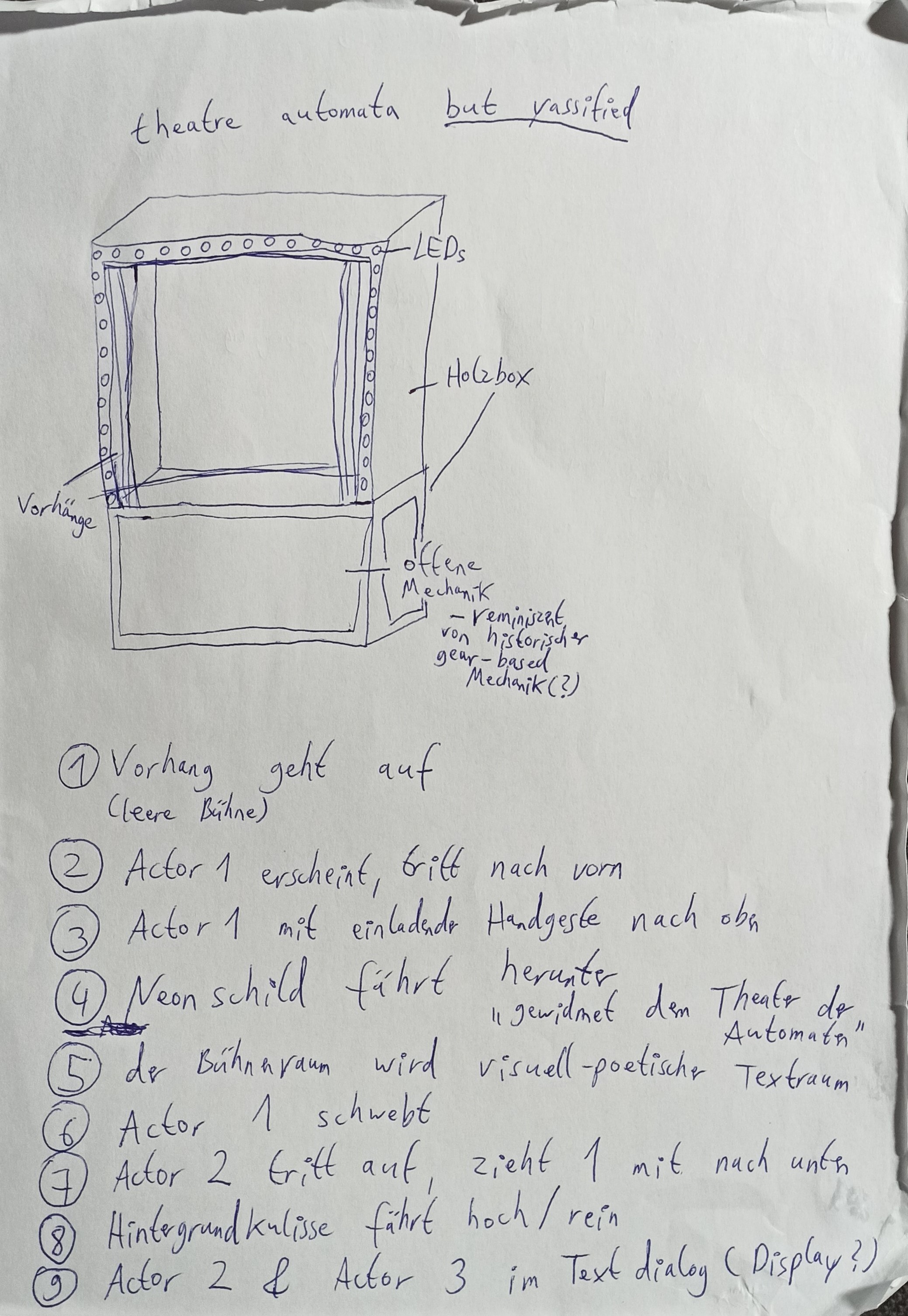

1) crafting & electronics: succeeding despite failing
the hardest part about this electronics & product design class surely was the whole analog crafting stuff. despite doing a lot of paper crafting in my freetime in my childhood, i don’t usually do stuff like sawing, drilling, hammering, nailing, soldering or wiring, and i have absolutely no clue about physical materials, what best to use, or where to buy this stuff, etc. especially soldering was quite challenging, and it even happened to me that i accidentally created a short circuit with my arduino, and it was all very stressful and tiny little elecontrics (e l e c t o n t r i c s!) to work with. (i always need strong cis men to do this stuff for me!!! (jokingly) and i actually did have some cis men helping me with this stuff, so yeah.) i had a lot of long nights with both crafting and also getting software of the arduino and my computer with it to work as intended. surprisingly, one visitor even commented their appreciation for the design and craft of my machine, so that’s a nice thing, i guess!!! <3
i spent october to december 2023 solely with developing the idea, getting the printer to work in a first experiment, thinking about interactions with the machine, figuring out which arduino board to use (i had to later rework all that entirely in january anyways, but yeah).
because i do not have any clue about product design, i had some help from the teacher who sketched a possible design (similar to the one that ended up as the hugging-machine in the main hub of the virtual exhibition space) and argued for the insertion of hand(s) instead of a button.
when i went to the building supplies store in early january in order to buy SOMETHING for the casing of the machine, i had to rework and reconsider the design i was going for, because it was too expensive considering that it was a no-budget work that i would just exhibit for these 3 days (initially it was intended to present solely one evening) – idk who has the financial privilege to do something like this with expensive materials, apparently students from product design, but i myself unfortunately haven’t.

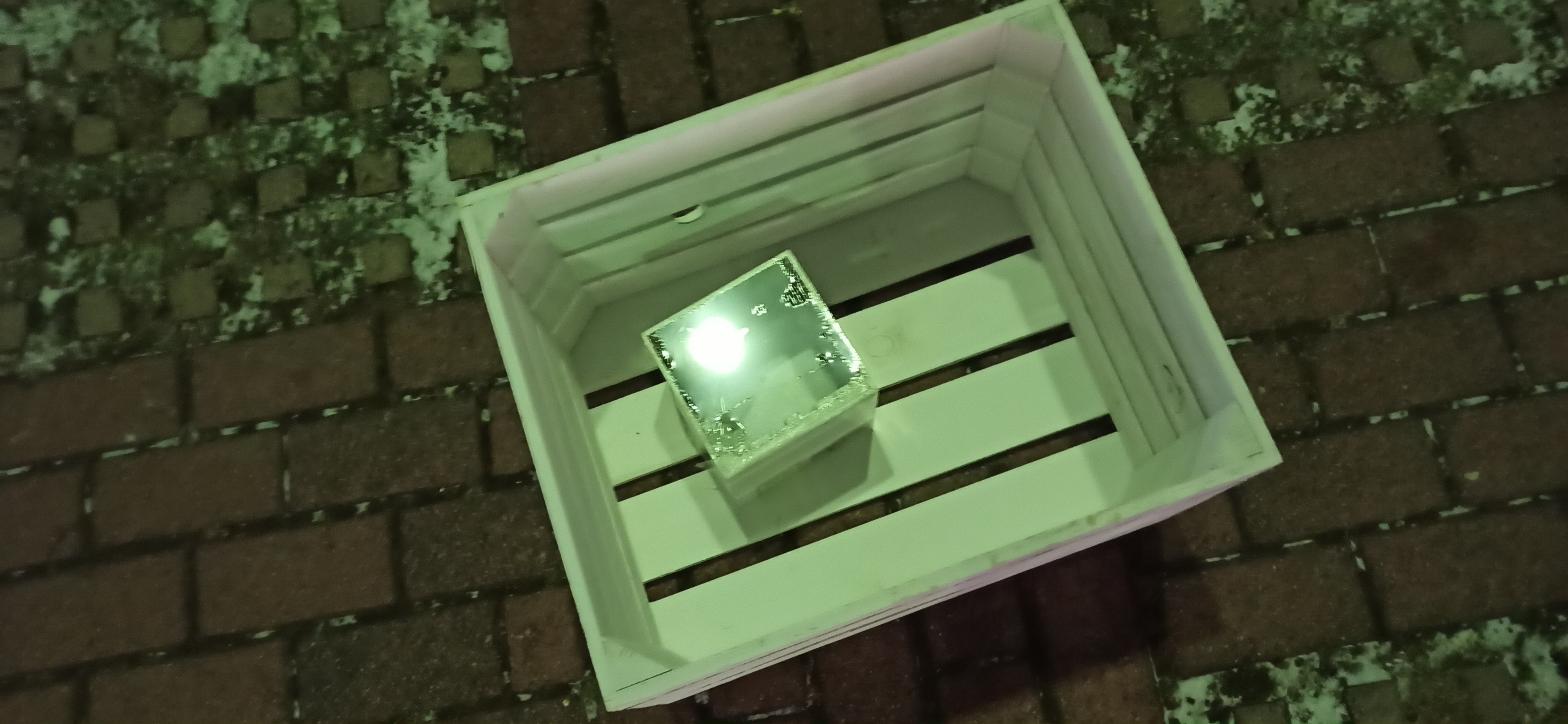
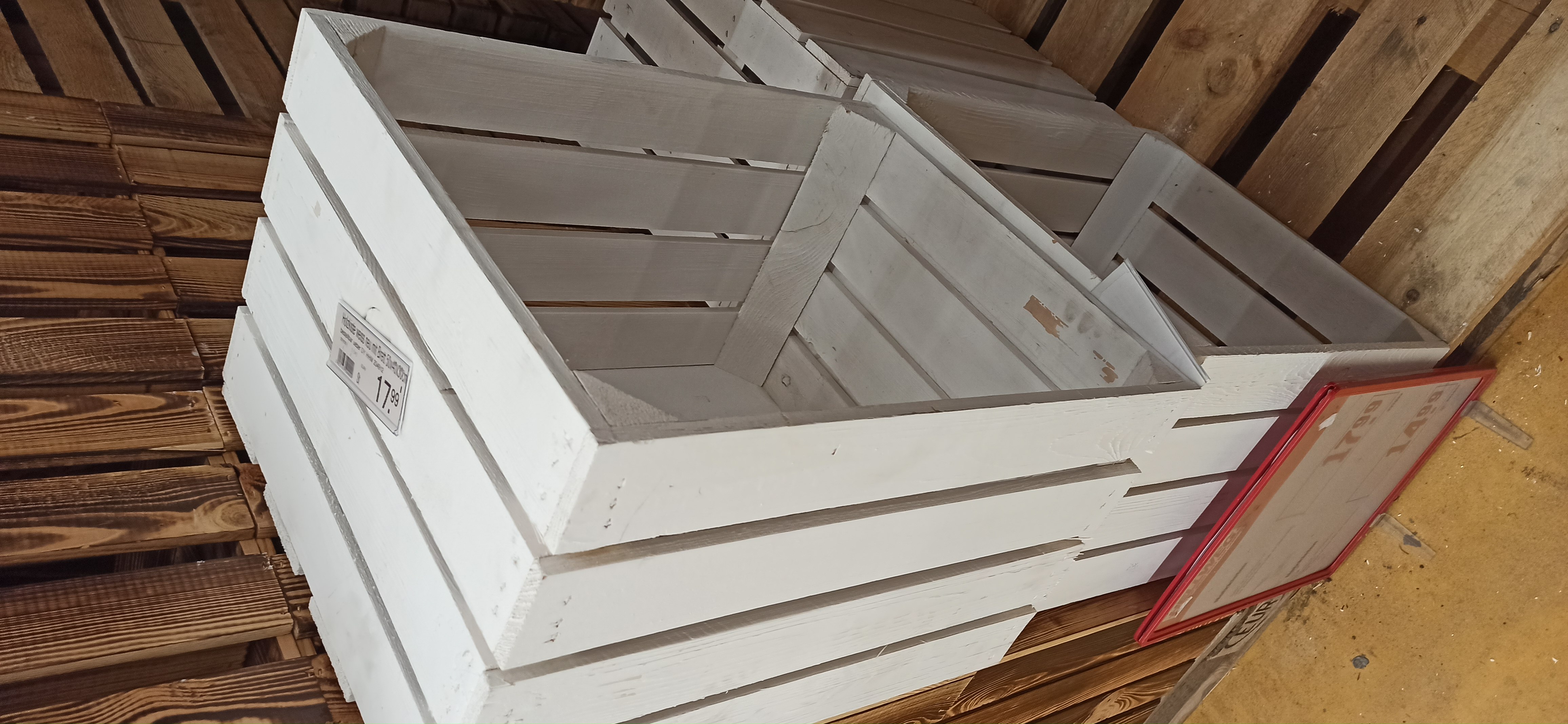
therefore, i spontaneously had to rethink the design and went back to my initial idea of just taking a wooden box. they had a cheep wooden crate there that was already painted white and thus fitting for my cloudy aesthetics of the video, and i guess my design choice was then price and the store’s stock over aesthetics, and i just needed to buy something in order to continue working. unfortunately, the crate was a bit too tiny, that’s why i had to saw it into halfs that are reconnected again. i guess my design choices were then more out of practical necessity than aesthetic considerations, function, price and practicality first and then form. luckily, i was able to borrow at least the monitor from the university, and also some of the sensor and lighting things for my arduino. initially i bought some long nails to connect the crate a bit, but was asked to buy a thin metal stick later in order to stabilize it. i ended up just placing the monitor inside the crate without screwing it to the wooden board behind it, because one day before the exhibition and with a lot of stress and the code just barely working and so on i had no time/motivation to additionally go buy fitting screws. my price list for this whole project was already too expensive anyways; i want to share an image of it here, despite aiming for the cheapest possible design, it still was challenging altogether.

(i ended up spending roughly 180 euros despite it being a very cheap design, but one could subtract the purchases of otherwise useful items that i can use in other ways too (yellow) and also some dumb purchases that i didn’t need in the end (orange), which then would be around 110 euros, which is still a lot in my view. strictly speaking, both the wires and breadboards were also not really used in the end, but helpful for testing purposes and so on. i also forgot to list the cotton wool here, but it was just 0.99 euros.)
another big thing was to figure out the code and to get it all running. initially, i wanted to use a gemma m0 controlling my computer keyboard in order for a unity program to receive an input. as a button, this worked. but as i was asked to come up with something more interesting than just pressing a button, to insert one’s hand instead, it got more complicated, and also the thermal printer’s softwareserial library sparked some compatibility issues. in the end, i went back to my arduino uno and controlled the video via something compatible with the arduino, a trial version of max/msp, which was suggested to me. (i’ve worked with pure data before, and it would have been probably better, because pure data is free & open source, but well.) it was quite challenging to get back into arduino and to understand the stuff i’m doing at least a little bit – maybe in part due to my dyscalculia it is actually always hard to code anything, also when i’m doing something in unity, and i always have to really concentrate and oftentimes slowly rethink the code again after starting the application again in order to remember how this stuff worked, or sometimes i even forget in the middle of something what i was doing and what everything is doing, and eventhing becomes very confusing all of a sudden.
right now, the max/msp program regularly crashes the ram of my computer, and the full arduino code seems to be 200% above the memory limit of it. for the exhibition, i therefore only used 15 of the 35 compliments, and i also had to stay present there and regularly restart everything when it crashed.
even though it was very interesting to build a physical machine, i surely would have preferred to just make a little ludic-virtual-environment artistic software thing instead – of course, because i am me, i ended up doing this additionally.

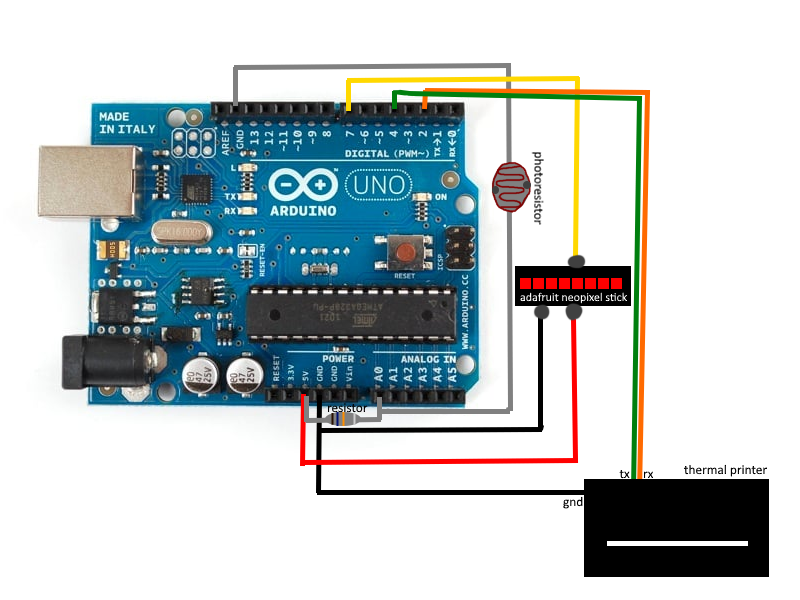
2) notes on additionally creating a software version for my itch.io page (because that’s what i’m doing in my actual artistic practice)
the software version features all of the different prototypes. in the main hub room, we have a digitalifact of the palmistry-design i ended up with, and also the hugging-design that would have been too expensive to build. (i love game engines, you can do everything in virtual space without being constraint by material costs or the laws of gravity and physics.) the videos that you can see here are the final version in vertical format that i post-processed an re-recorded with unity.
the exit with the rectangle leads to my initial prototype of this machine with my first videos in horizontal format and as a heavier machine that one operates via the press of a button. as i already implemented the full video functionality here for testing purposes, i left it in as the only compliment machine that is fully functional.
the exit with the cloud, on the other hand, leads to an alternative idea that i had, where i would have used a controller in order for an audience to navigate a cloud through a labyrinth and collecting compliments – upon collecting one, the thermal printer would then have printed it. the navigation is a bit clunky, because i barely every used 3rd person navigation stuff before, and just freestyled the code for it over one night just in time for the exhibition, but yeah, it kinda works, and that’s all i really wanted. i ended up displaying the compliment’s text instead of directly collecting the text (similar to for example julia nakotte’s 1 minute poem+), but it didn’t look good with that camera angle, and i didn’t want to change it, so i instead changed it so that one collects little transparent, abstracted spheres that display the text instead of collecting the text directly. here, the compliments are actually randomized and not in a fixed loop, which just was a bit too difficult for me to implement with the arduino while synchronizing the video with it.
as always, one can also find a secret, this is a must have for me, because i like secrets and layers in games.
3) idle performance & theatrical constellation
generally, this machine can be described as a contemporary take on historical theatre automaton, but with video instead of physical mechanics. when it comes to theatre/theatricality and video games, full motion video (fmv) is definitely an important element of it. i saw it as little performance and acting opportunity, but i extended this into the physical space by dressing up accordingly and, in theory, creating something similar to a brechtian alienation effect.
i dislike being physically present anywhere. especially in places or situations that do not constitute easy and clear social rules with minimal social interaction.

one can probably see in the images of me during the exhibition days that i didn’t get (enough) sleep for the last 5 days. especially the finishing process while also always travelling to weimar from my home, dealing with lots of delayed, cancelled and missed trains, and also being solely mentally invested into this project, was very exhausting.
one of the things i love about digitizing myself and solely doing art that can be experienced in my absence is not just that the artwork/text etc can speak for myself then (especially on those days when i have a reduced ability to verbally communicate), but also that it gives me more control about my appearance and stuff – i can make sure that i am in an okay-ish mental state and okay-ish physical state when recording things; doing stuff without physical presence is more chill.
because i had to be present in order for my computer not to crash, i incorporated my physical presence into the whole exhibition experience. i’m calling this an idle performance, which means that i am waiting, similar to the idle clip of the machine playing in a loop when noone interacts with it, and kind of playing my own idle animation. mainly, i just stood next to the machine and stared into the room, or i walked a bit around and stuff. i am thus artificially extending the machinic on-screen performativity into the real physical space surrounding it. i surely cannot the level and precision of professional dancer-performers like for example nicole hoff and oskar szymkowski whose very interesting npc dance videos have garnered quite some attention on social media, but still in my view an interesting addition to this machine.

4) observations from audience-machine-interactions
i would like to share some observations from the exhibition days.
the first one is that one visitor asked me, apparently without even reading my posters, whether i as the artist am the artwork that i am exhibitioning. i kinda read this kind of stupid question as trolling and answered ironically with a yes, but i think this question in part comes from people at bauhaus university generally not really being a lot in touch with theatre, and apparently this person thus couldn’t contextualize my machine as theatrical without the information of the poster, and identifying me as a performer with their video-recorded duplicate. that’s unfortunate, but i don’t see how i could have changed that. but also, it would be a funny idea to just exhibit oneself as the artwork in maybe an abramovic-way, or, idk, i am thinking of dries verhoeven’s 2014 installation and performance wanna play? (love in the time of grindr) that was presented in berlin and that i find very interesting.
the second one is that several interactors searched for a button to press, even pressing the photoresistor. because of that, i even created a little sign with an instruction how to use it. it’s unfortunate, that people apparently do not read posters before interacting, but that’s of course also a design flaw that my machine somewhat should have addressed, even though i am usually not a fan* at all of making things simpler and less cryptic just for people to understand it. apparently, and contrary to art, product design requires simplification and user-friendliness – and so i’m glad that i’m not a product designer.
a third observation was that, while doing my idle performance in front of my machine, people wanted to give their hand to me to receive a compliment, instead of to the machine. the performance here created confusion, and in some interactions also social awkwardness. again, more visible documentation and maybe simpler, more visible instructions would likely have solved this.
and a fourth observation i want to share is that one visitor repeatedly inserted their hand to print out compliments until they found something they were happy with. this of course is an especially interesting interaction that is only possible with a machine, and that highlights the nature and reason why this is a machine instead of a physical human-human social interaction in the first place.
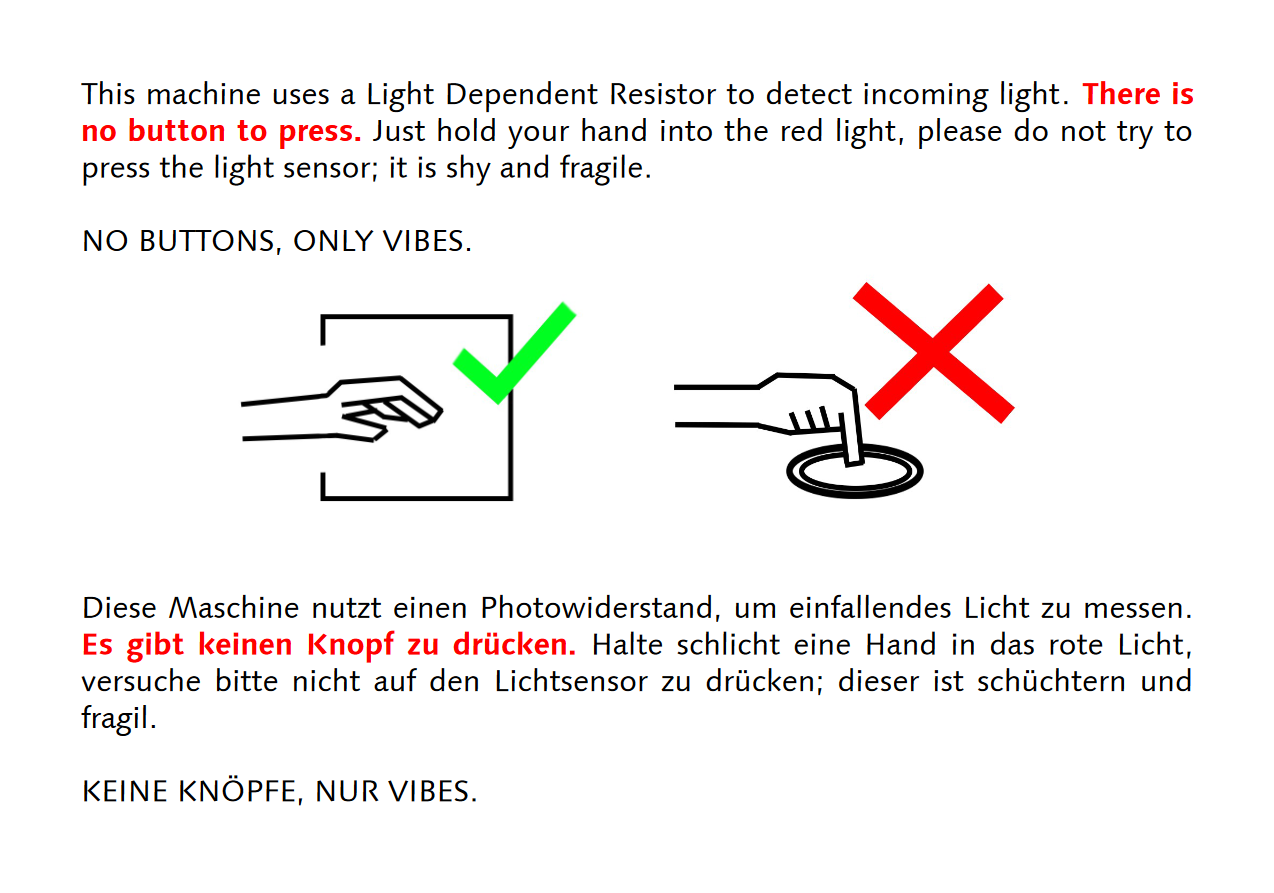
5) here are some further images from the exhibition days (these were kind of my last days in presence at this university, therefore i took some more images)
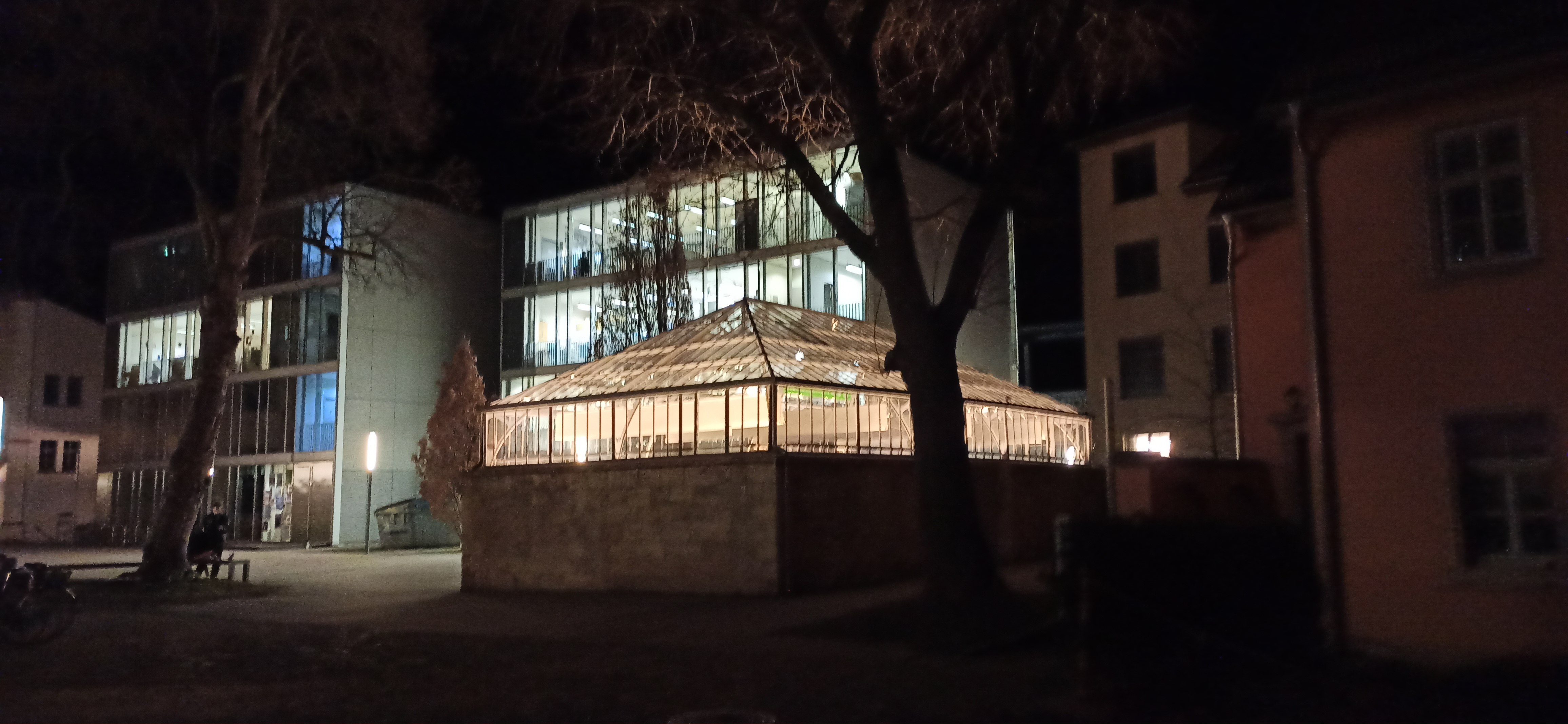
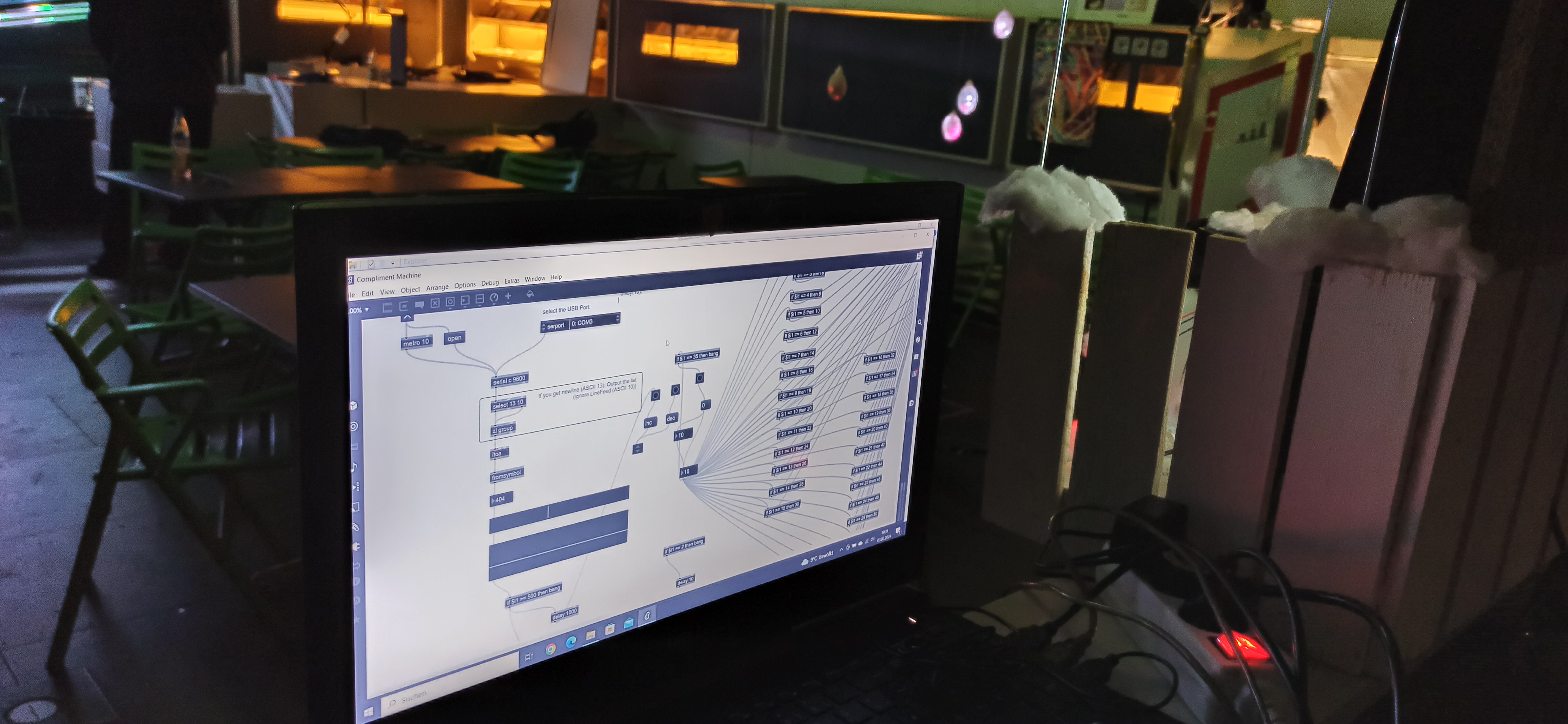

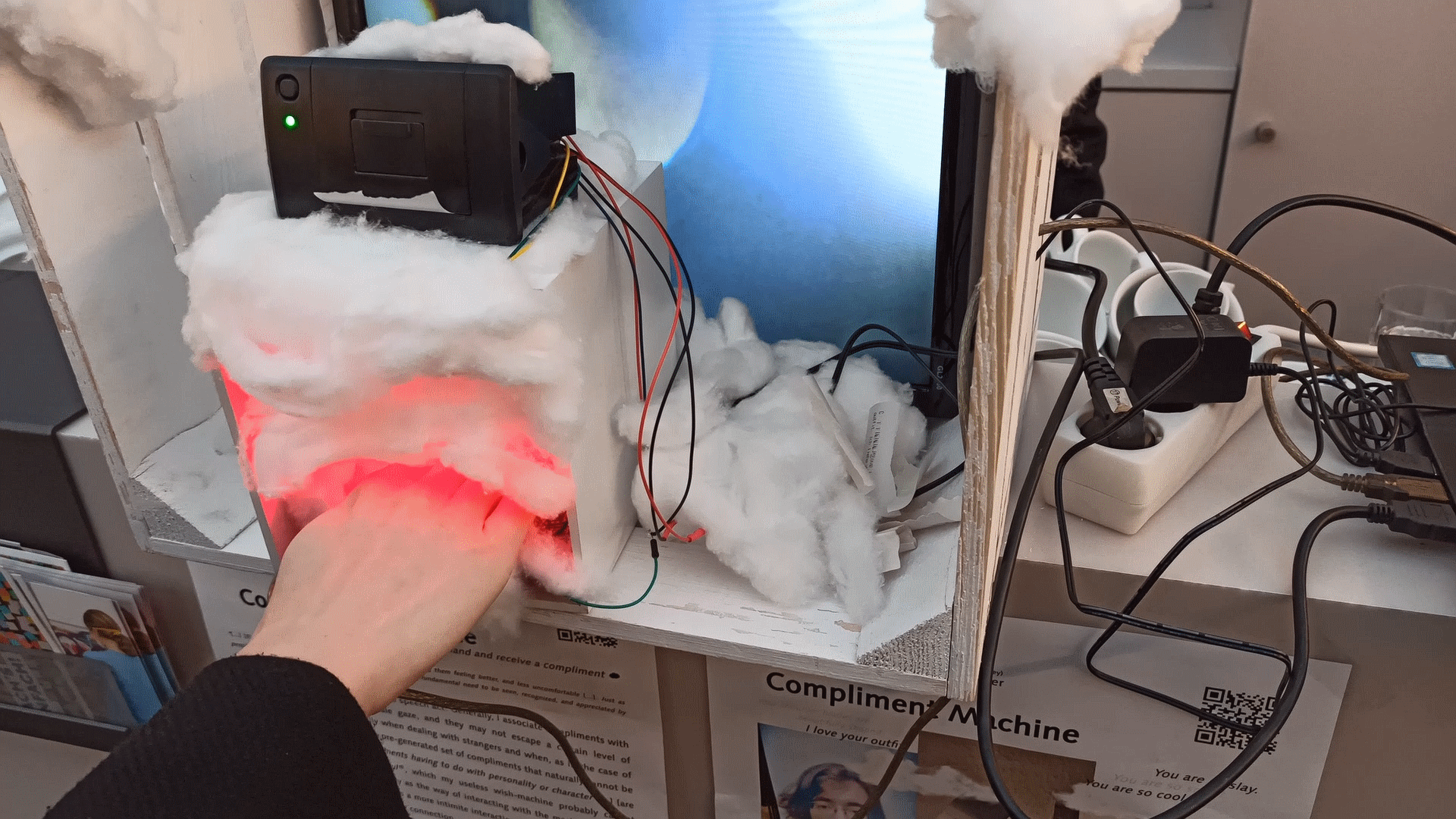
Compliment Machine
☁️give me your hand and receive a compliment☁️
| Status | Released |
| Author | luka |
| Genre | Simulation |
| Tags | 3D, artgame, Atmospheric, Experimental, FMV, machine |
| Languages | German, English |
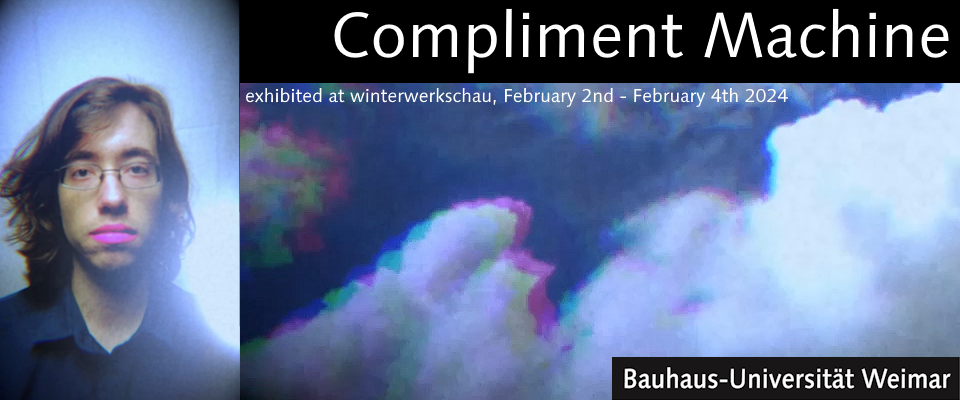
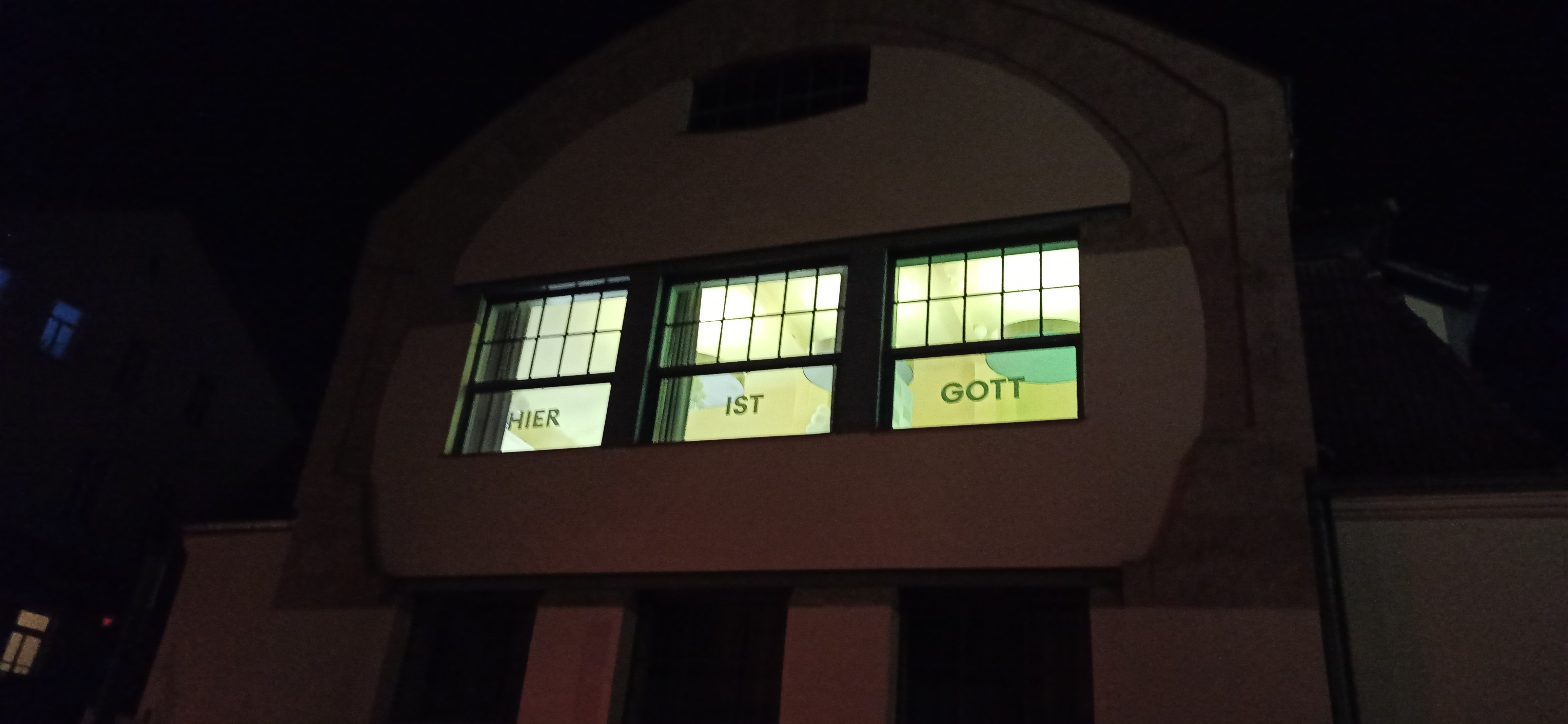
Leave a comment
Log in with itch.io to leave a comment.